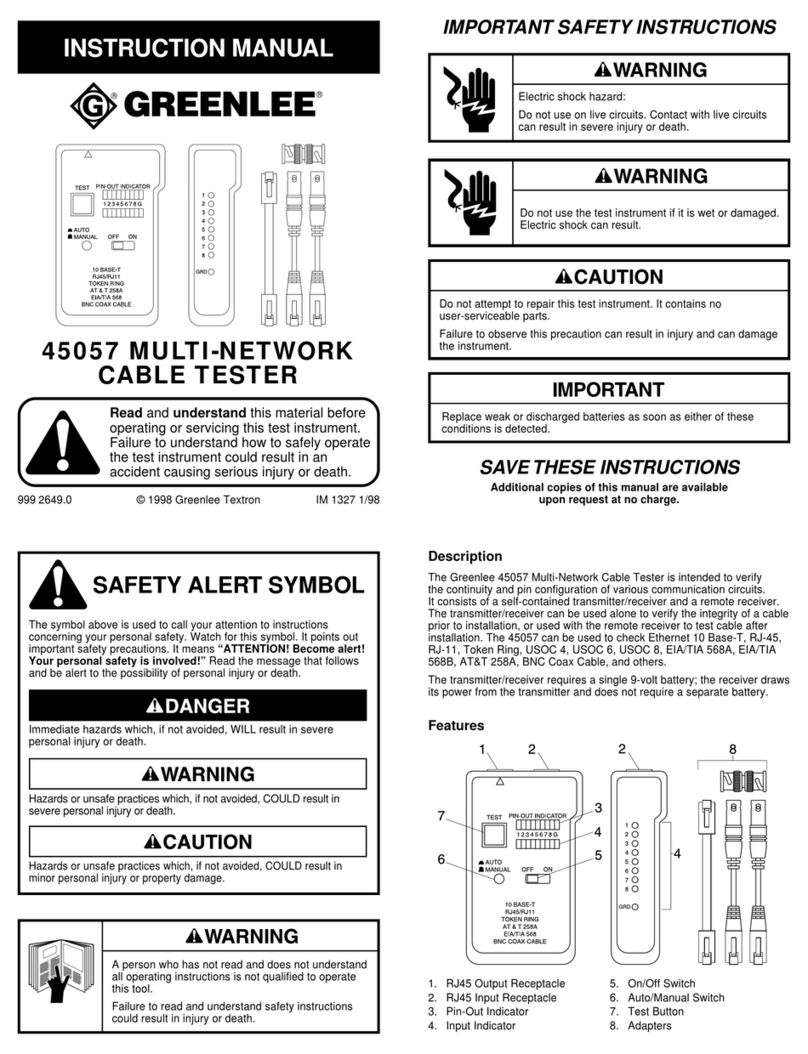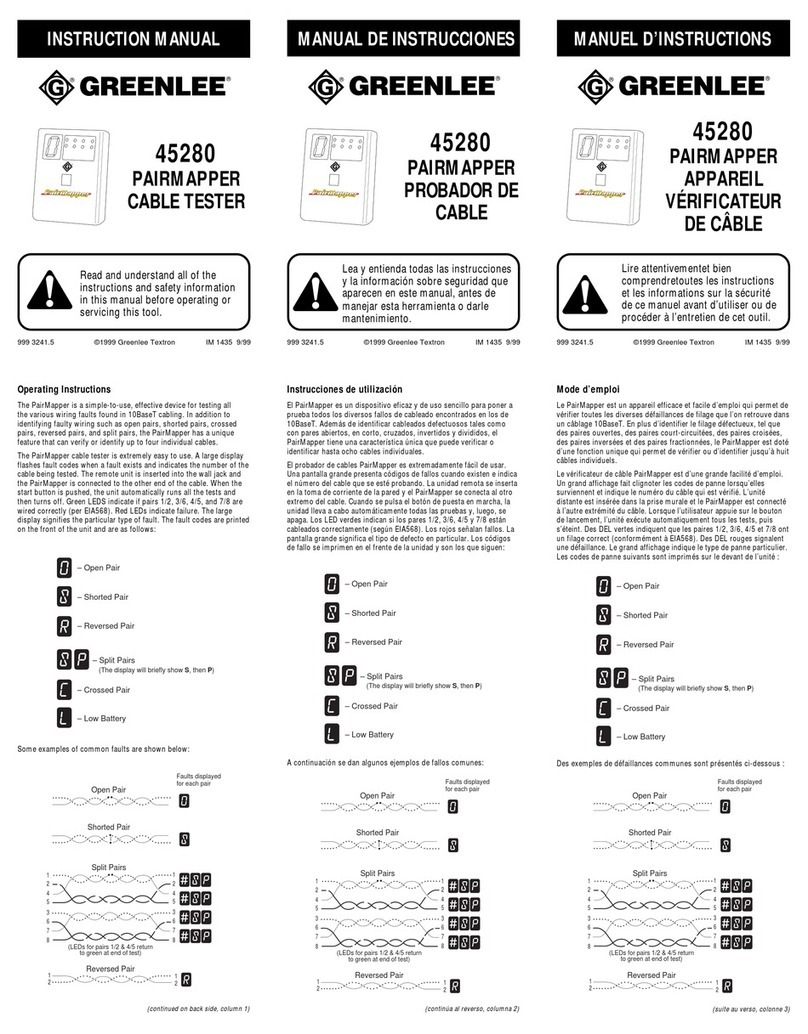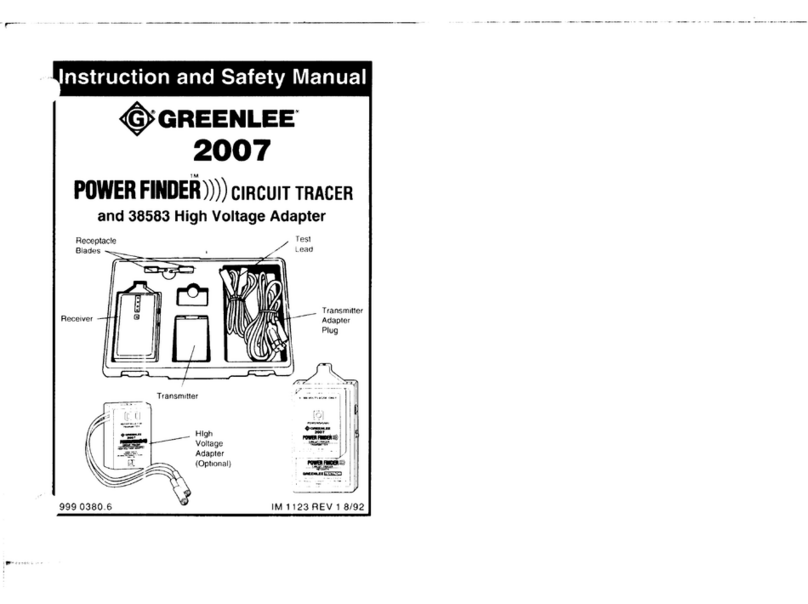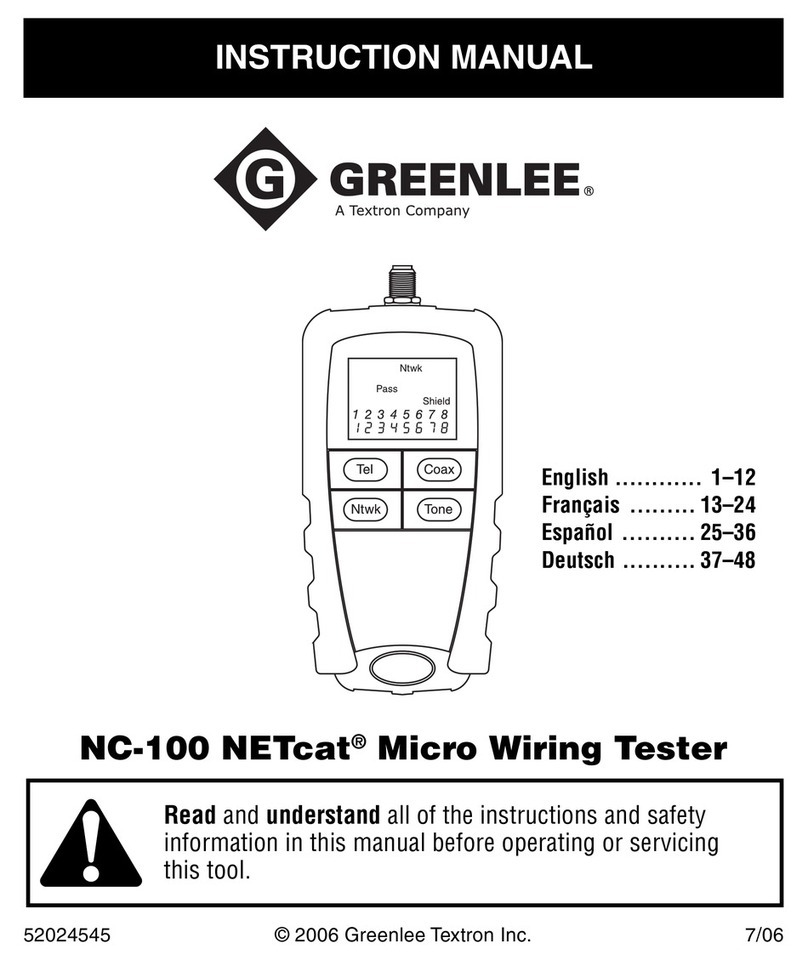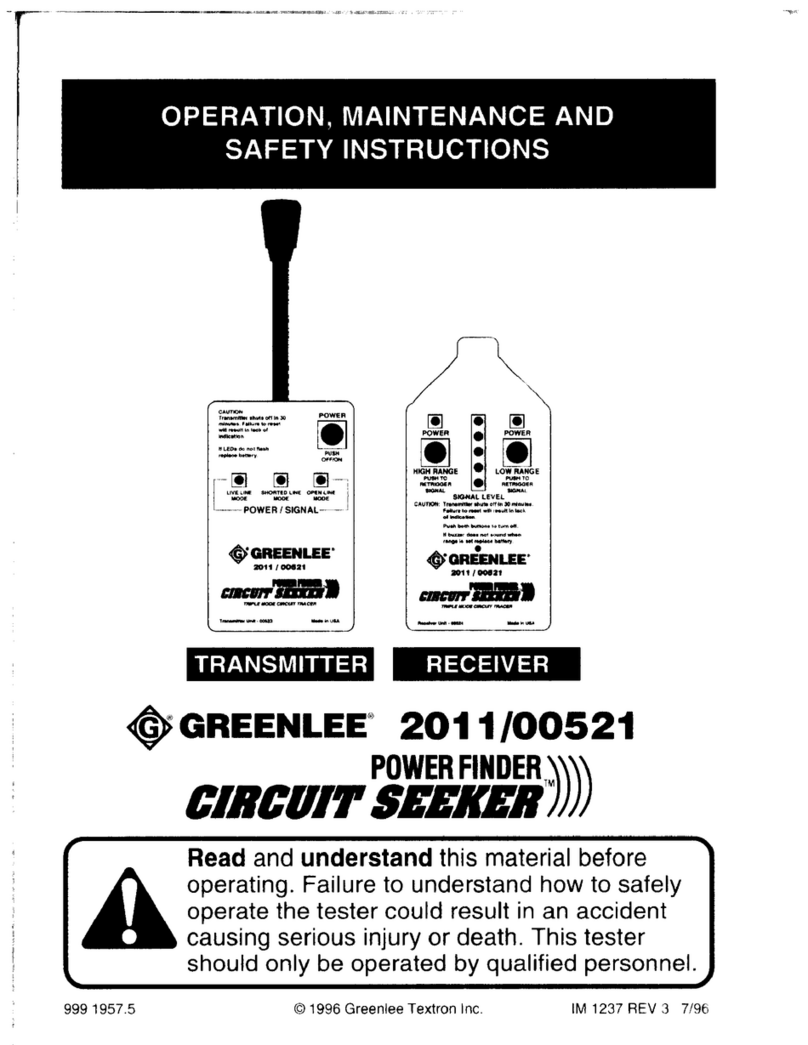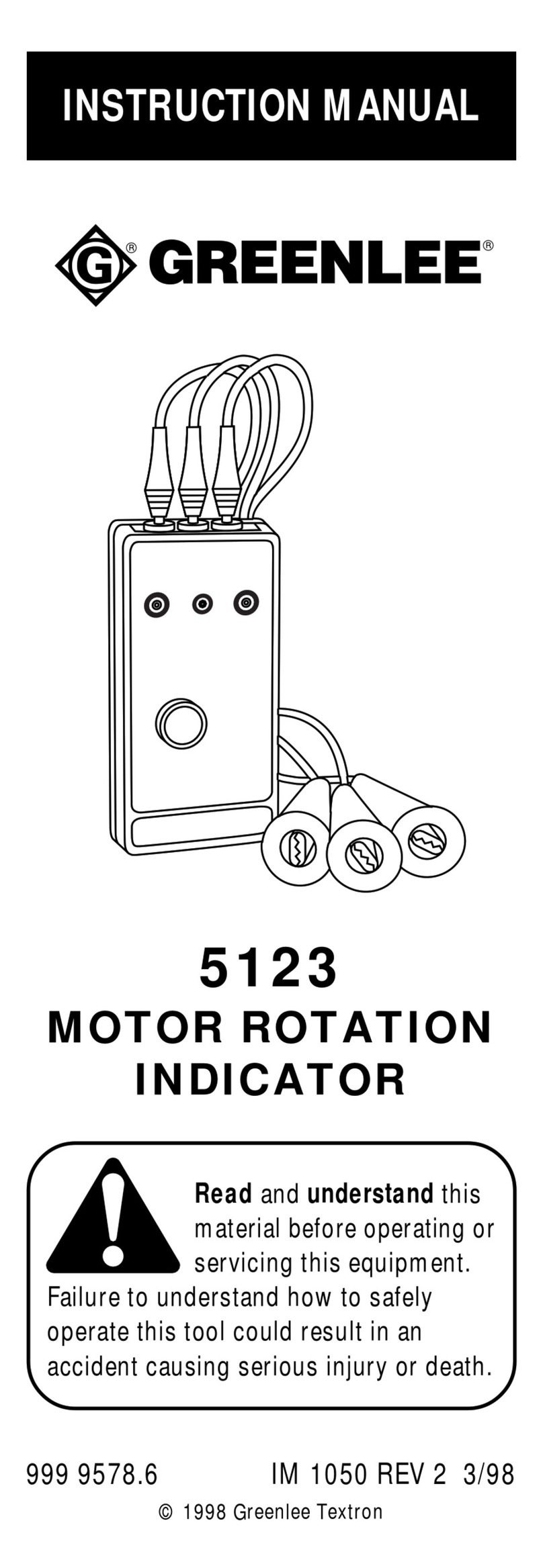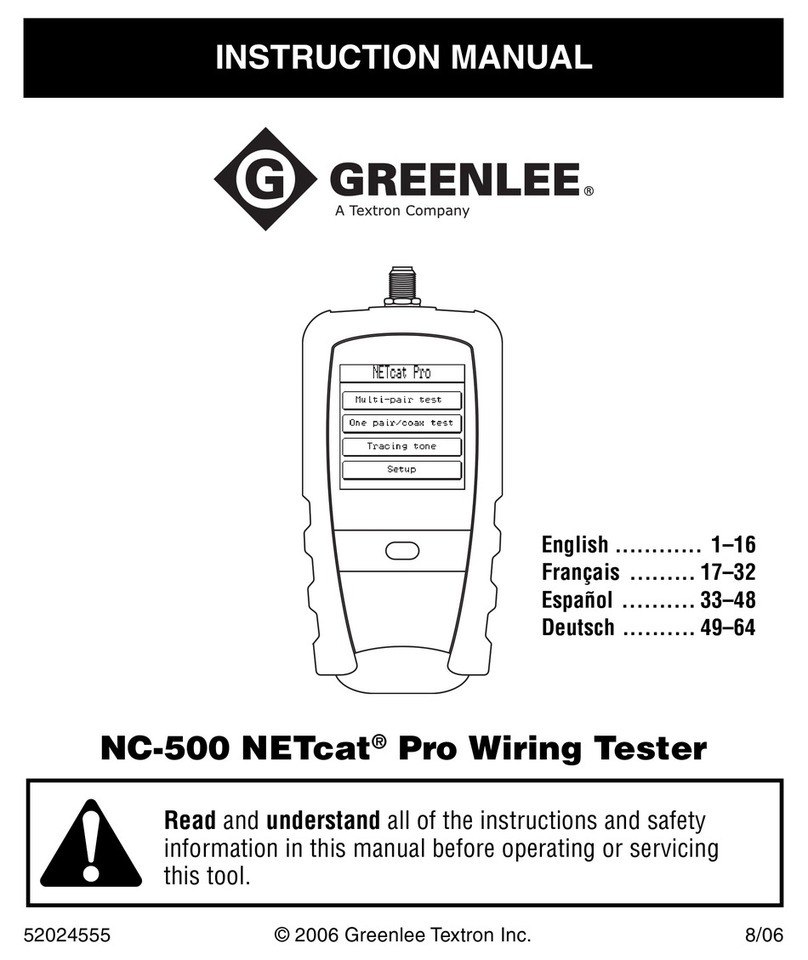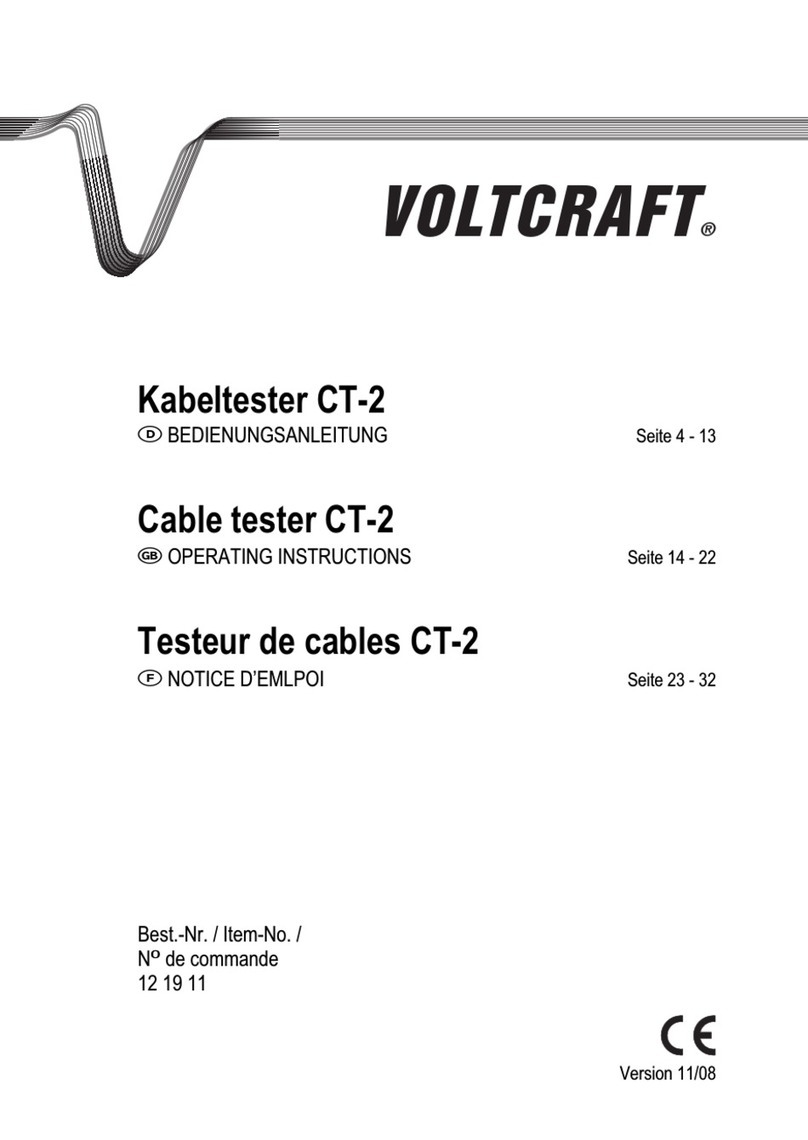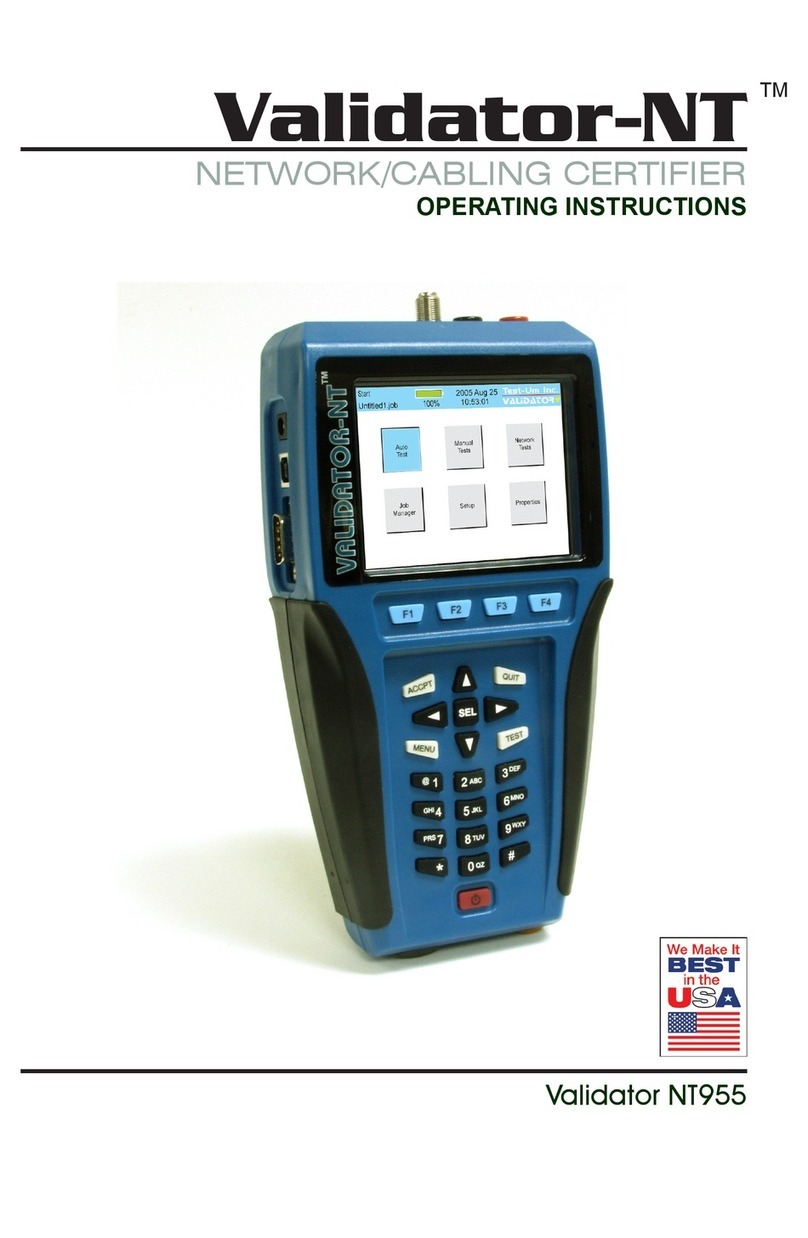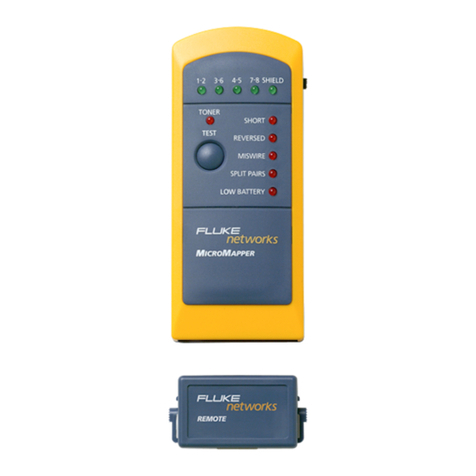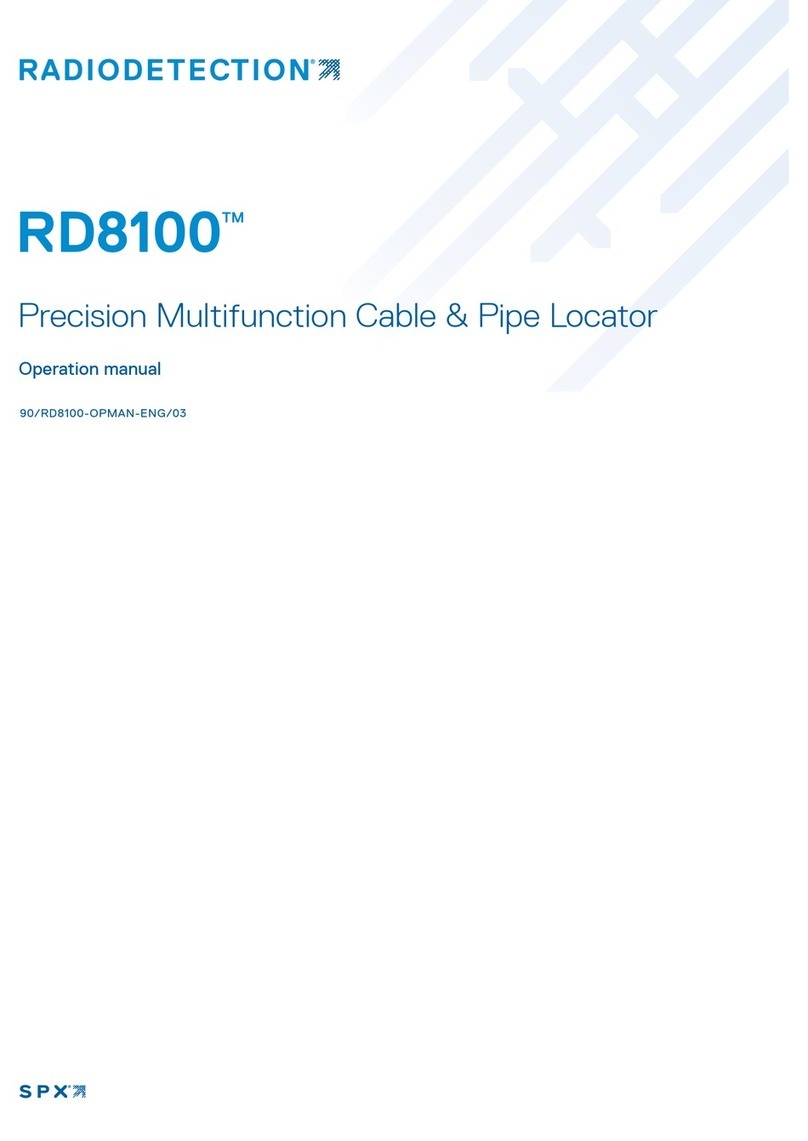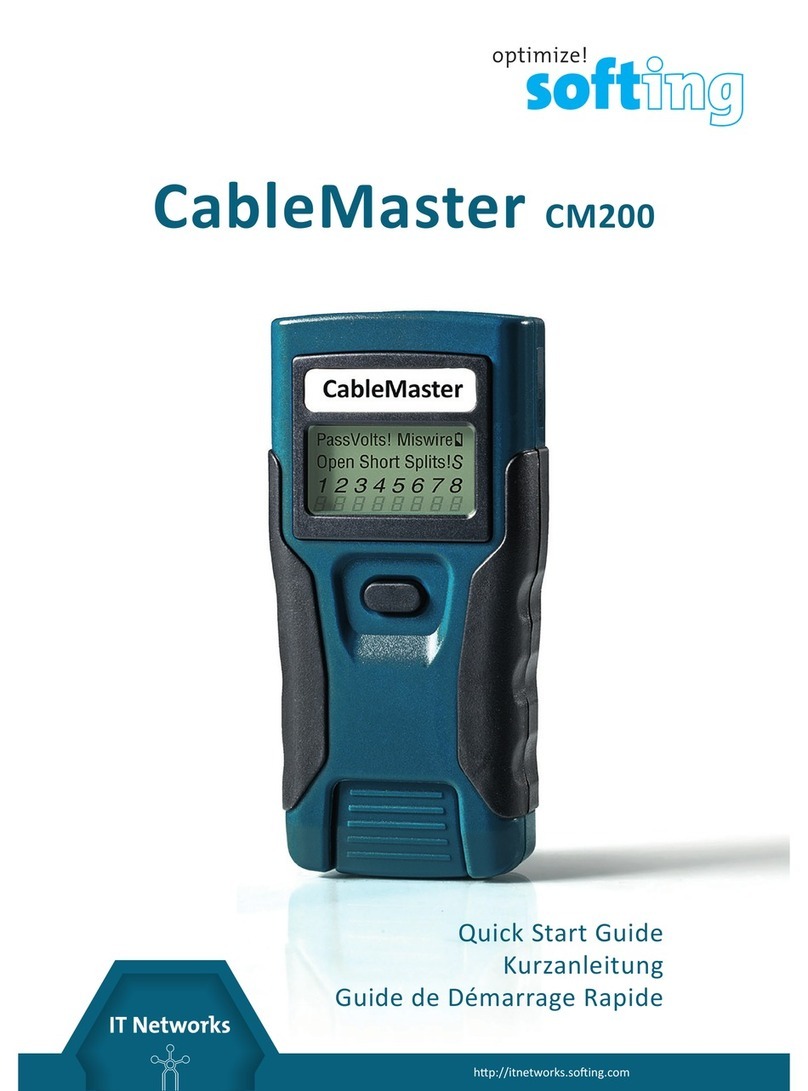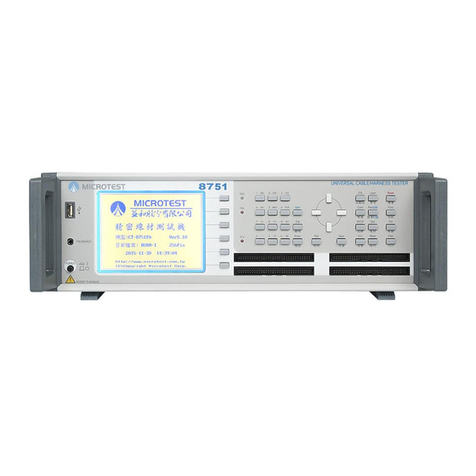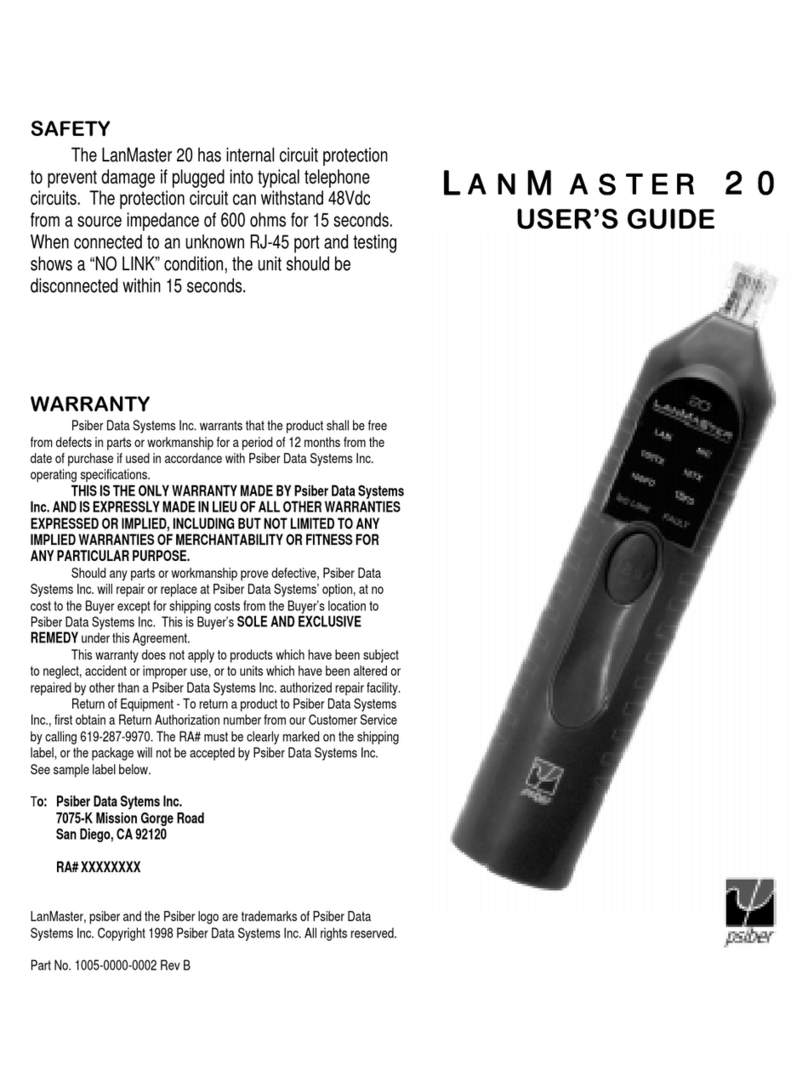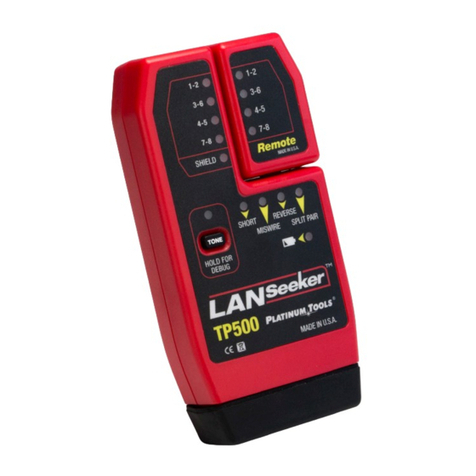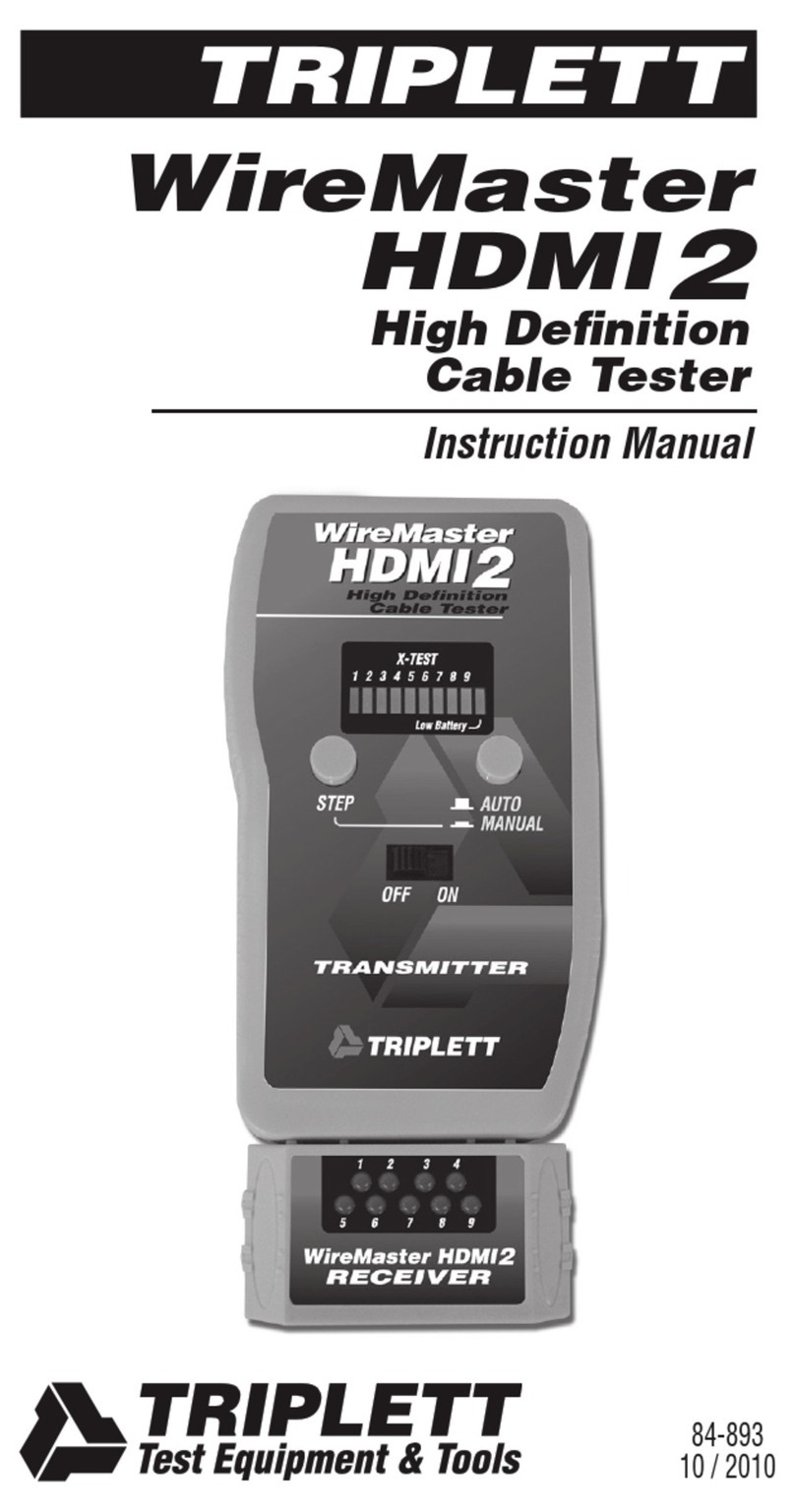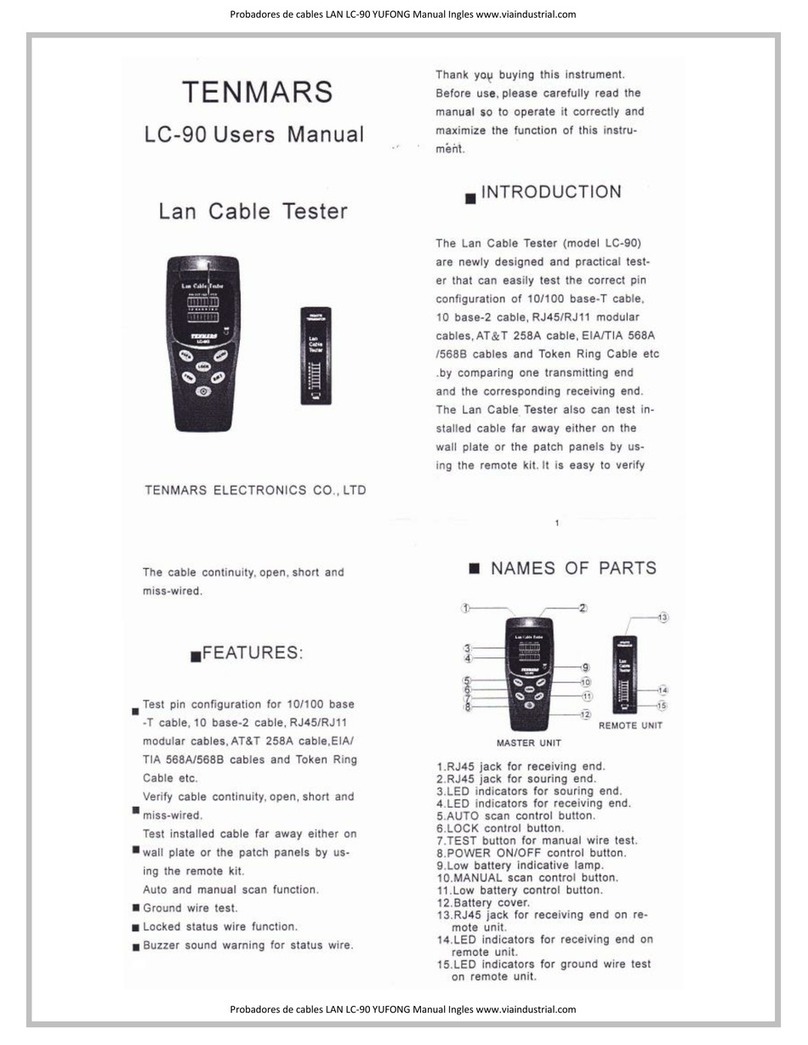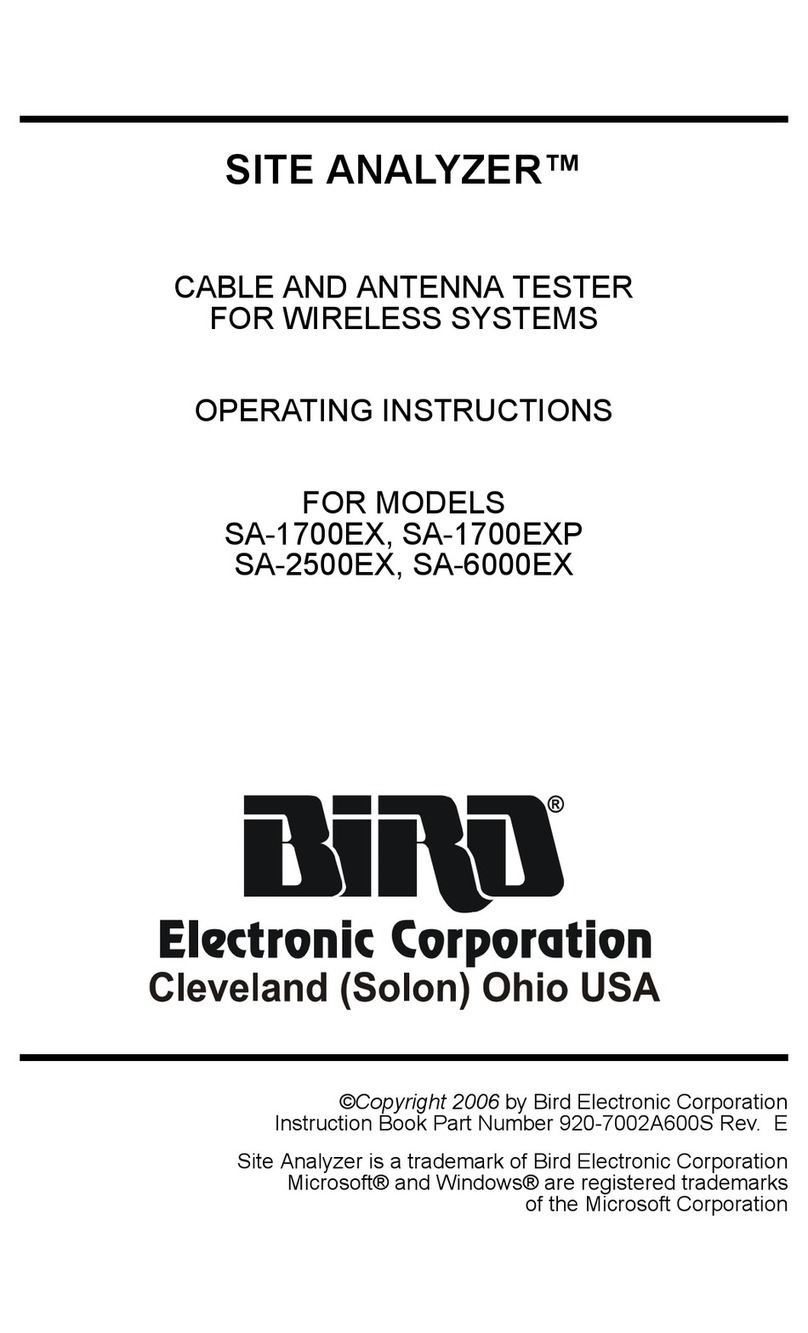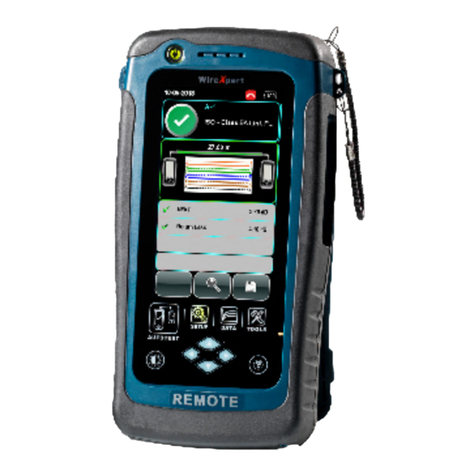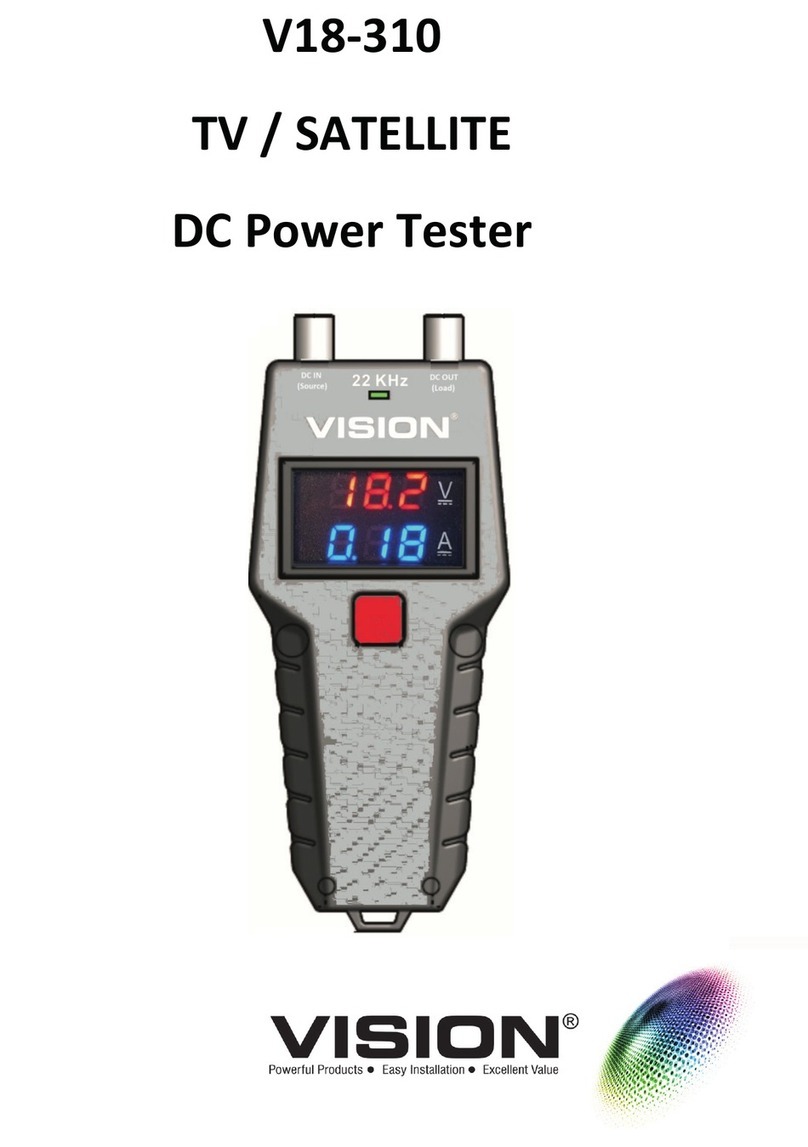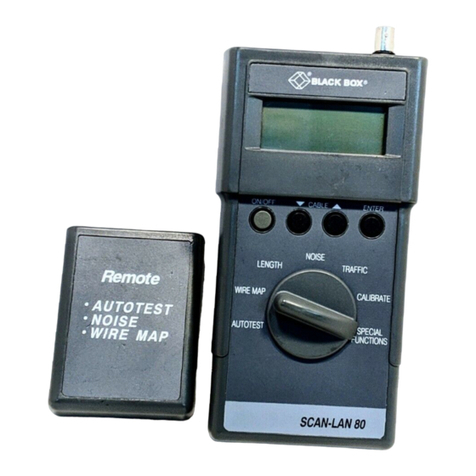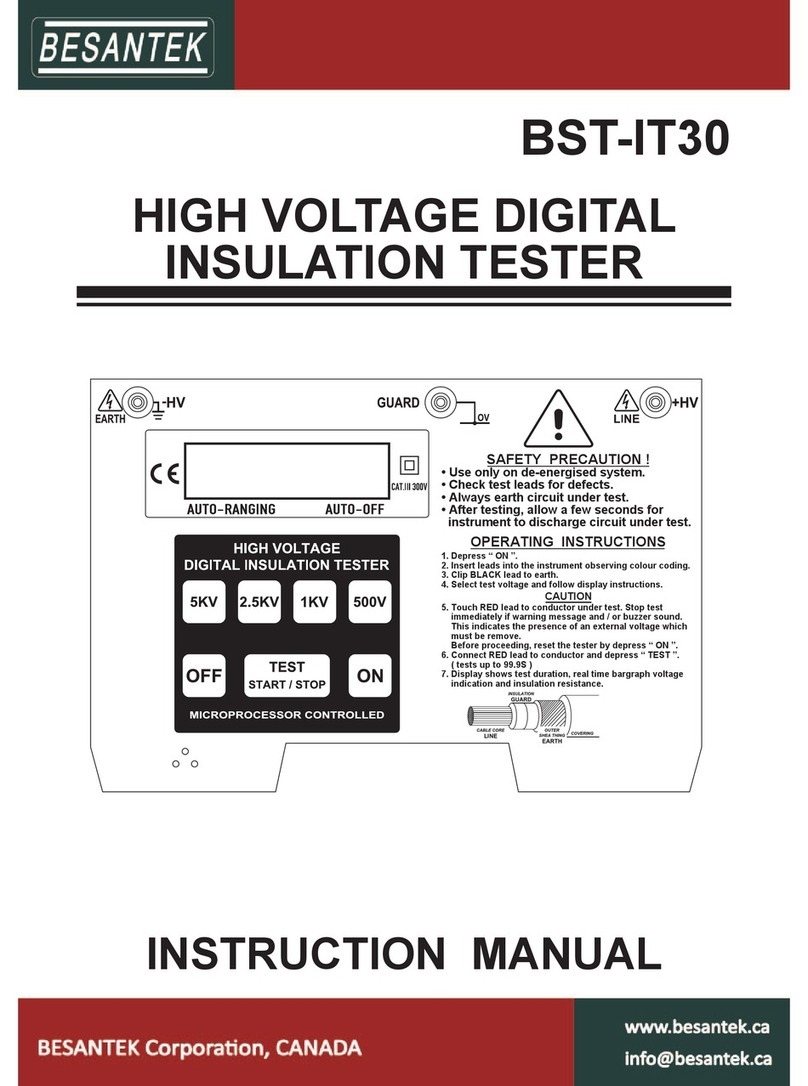8
6. Test the unit on a known functioning circuit or component.
(Receptable should be NEMA 5-15R with 100 to 125 VAC,
50 to 60 Hz.)
•If the unit does not function as expected on a known functioning
circuit, replace the battery in the receiver (2012-R).
•If the unit still does not function as expected, send the unit to
Greenlee for repair.
Tracing a Circuit
1. Set up the transmitter and receiver as described in Setup above.
2. Beginning at the transmitter, move the receiver in a sweeping
motion along the wall, floor or ceiling.
3. Using the tone and “H”display as a guide, trace the wiring. Adjust
the sensitivity according to the material of the wall, floor or ceiling.
•Decrease the signal’s intensity (and the receiver’s tone) by
turning the knob clockwise.
•Increase the signal’s intensity (and the receiver’s tone) by
turning the knob counterclockwise.
Note: If the signal becomes lost during this procedure, continue on to
where the circuit is likely to end (a junction box or fuse panel) and trace
back to the transmitter.
Locating a Circuit Breaker
1. Set up the transmitter and receiver as described in Setup above.
2. Slowly move the receiver toward the circuit breaker panel.
The ON/Pulse LED will blink and an “H”will appear on the display.
A series of tones will begin. The “H”will help distinguish the real
signal from interference or line noise.
Operation (cont’d)

